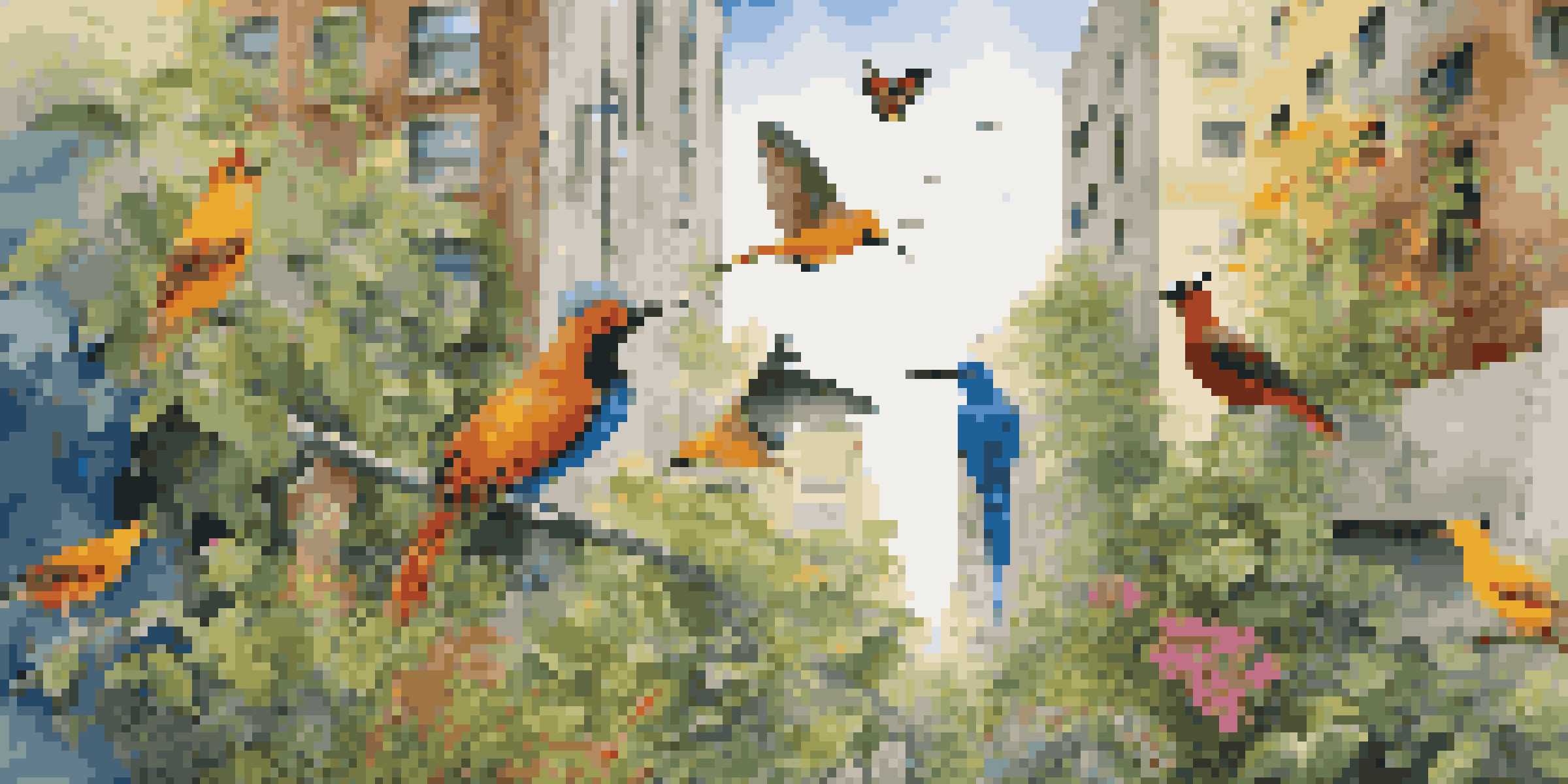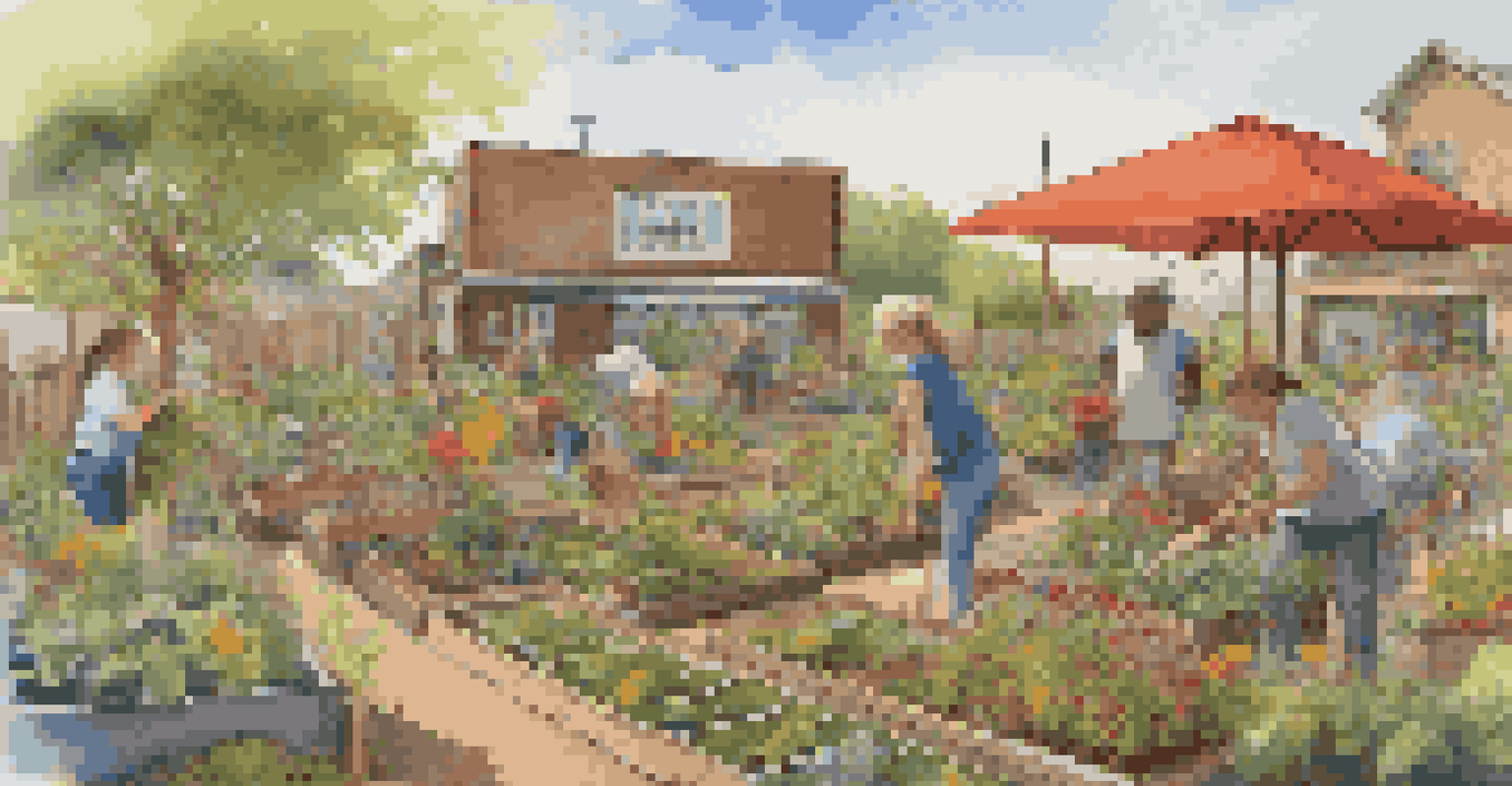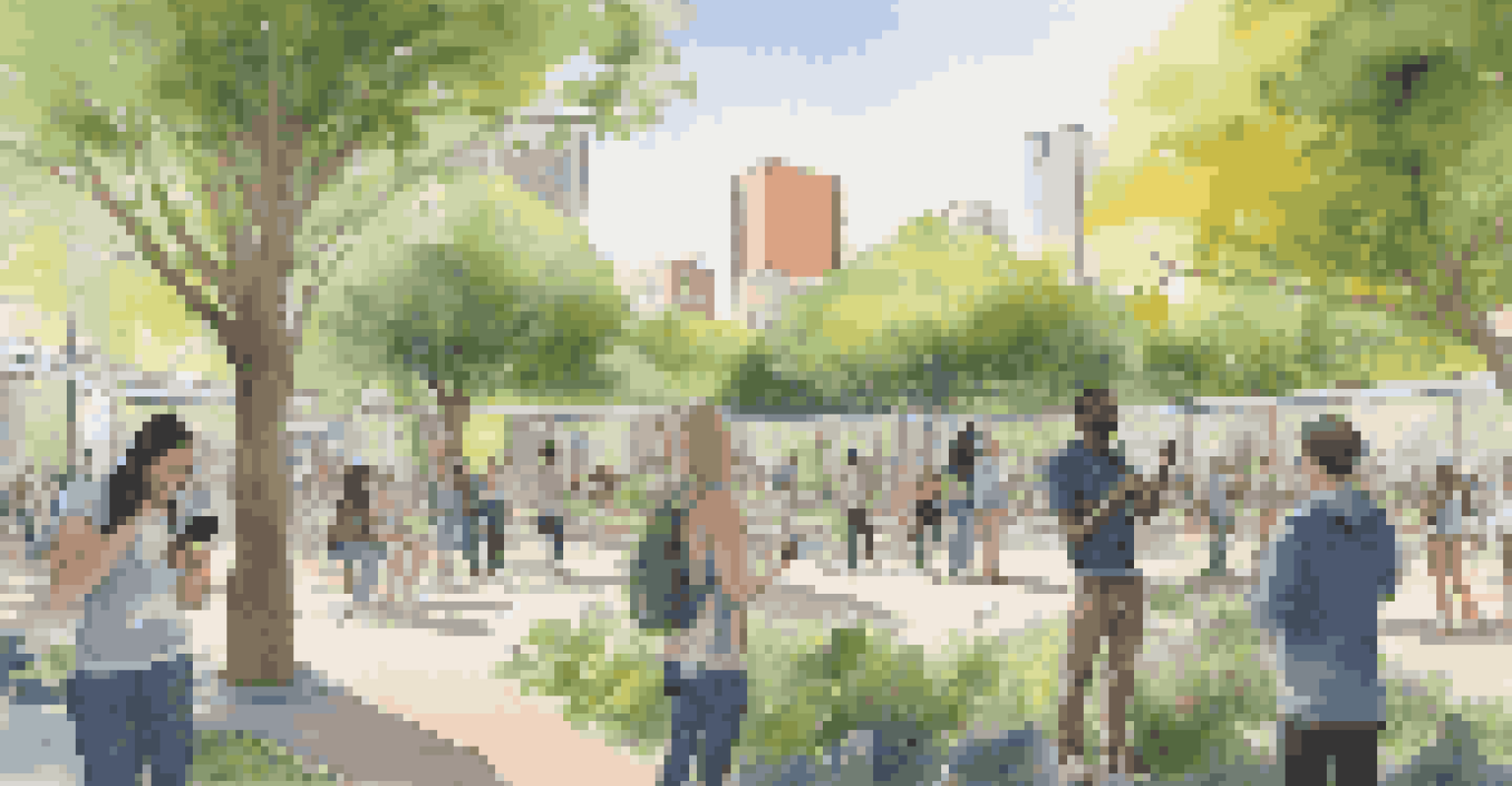Artistic Practices in Urban Nature: A New Frontier for Eco-Art

Understanding Eco-Art and Its Urban Context
Eco-art is an innovative movement that merges environmental awareness with artistic expression. This practice focuses on raising consciousness about ecological issues through various art forms. In urban settings, where nature is often overshadowed by concrete, eco-art strives to reconnect city dwellers with the natural world.
Art can only be truly art if it is a reflection of the times, and in our time, the ecological crisis must be our canvas.
By incorporating elements like recycled materials, living plants, and natural landscapes, artists create immersive experiences that invite reflection and interaction. For instance, a mural depicting local wildlife can spark curiosity and foster a sense of place among urban residents. These artworks serve as reminders of the beauty and fragility of our ecosystems.
Moreover, eco-art often engages communities in the creation process, encouraging collaboration and dialogue about environmental stewardship. This involvement not only enhances the artwork but also cultivates a shared responsibility for preserving urban nature.
The Role of Urban Nature in Artistic Expression
Urban nature presents a unique canvas for artists to express their ideas and emotions. Parks, streets, and vacant lots can all be transformed into vibrant showcases of creativity. For example, a neglected alley can become a thriving gallery of murals, where each stroke speaks to the relationship between the city and its natural elements.

Artists often draw inspiration from the flora and fauna found in urban environments, highlighting the resilience of nature amidst human development. This connection fosters a sense of appreciation for the natural world and its ability to thrive even in challenging conditions. Through art, these themes can be communicated powerfully, making the invisible visible.
Eco-Art Merges Nature and Creativity
Eco-art combines artistic expression with environmental awareness, creating immersive experiences that reconnect urban dwellers with nature.
Additionally, urban nature serves as a backdrop for interactive installations that invite participation. When audiences engage with art in these settings, they not only appreciate the aesthetic but also become more aware of their surroundings, leading to a deeper connection with both art and the environment.
Community Engagement Through Eco-Art Projects
Community engagement is at the heart of many eco-art projects, making them more impactful and relatable. Artists work alongside community members to create artworks that reflect local culture and environmental challenges. This collaboration fosters a sense of ownership and pride, as residents see their stories and concerns represented in public spaces.
We do not inherit the earth from our ancestors; we borrow it from our children.
One notable example is a community garden designed as a living art piece, where residents contribute by planting flowers and vegetables. Such projects not only beautify the neighborhood but also promote sustainability and healthy living. They create spaces where art and nature coexist, enhancing the community's quality of life.
By involving the community in the artistic process, eco-art projects also spark conversations about environmental issues. These dialogues can lead to collective action, encouraging individuals to advocate for greener practices and policies in their urban settings.
Sustainable Materials: The Backbone of Eco-Art
Sustainable materials are crucial in the eco-art movement, as they embody the principles of environmental responsibility. Artists often use recycled, reclaimed, or biodegradable materials to create their works, minimizing waste and reducing their ecological footprint. This choice not only enhances the artwork but also communicates a powerful message about sustainability.
For instance, an artist might use discarded plastic bottles to form a sculpture that represents ocean pollution. By transforming waste into art, they challenge viewers to rethink their consumption habits and the impact of waste on the environment. This transformation is a striking reminder that beauty can emerge from what is often deemed worthless.
Community Engagement is Essential
Collaborative eco-art projects foster community ownership and pride, while sparking conversations about local environmental issues.
Moreover, the use of sustainable materials can inspire viewers to adopt eco-friendly practices in their daily lives. When art reflects a commitment to environmental consciousness, it encourages a broader cultural shift towards sustainability in society.
Digital Technology and Eco-Art Innovations
In today's digital age, technology plays an increasingly important role in eco-art. Artists are using digital tools to enhance their creations, from augmented reality installations to interactive online platforms. These innovations allow for a wider audience engagement and can amplify the environmental messages inherent in their work.
For example, an artist might create an augmented reality experience that reveals hidden ecosystems in urban areas, accessible through a smartphone app. This not only entertains but also educates users about the local biodiversity they might overlook. Such technological integration can deepen the viewer's connection to both the art and the environment.
Additionally, social media serves as a powerful tool for eco-artists to share their projects and raise awareness about ecological issues. By reaching global audiences, they can inspire action and collaboration far beyond their local communities, creating a ripple effect of environmental consciousness.
The Impact of Eco-Art on Urban Spaces
Eco-art has the potential to transform urban spaces, making them more livable and enjoyable. By integrating art with nature, cities can become vibrant places where people feel connected to their surroundings. This transformation can lead to increased foot traffic, local tourism, and a stronger sense of community.
Consider a city park that features eco-art installations: not only does it provide a space for recreation, but it also serves as an educational tool about local ecosystems. Visitors can learn about native plants and wildlife while enjoying the beauty of the art. This dual purpose enhances the park’s value and encourages a deeper appreciation for nature.
Sustainable Materials Drive Impact
The use of sustainable materials in eco-art not only minimizes waste but also promotes a cultural shift towards environmental responsibility.
Furthermore, eco-art can inspire cities to prioritize green initiatives, leading to more sustainable urban planning. As communities recognize the benefits of integrating nature with art, they may advocate for policies that promote green spaces, biodiversity, and environmental education.
Future Directions for Eco-Art in Urban Environments
The future of eco-art in urban environments looks promising, with more artists and communities embracing the movement. As urbanization continues to grow, the need for sustainable practices and artistic expression will only increase. This trend suggests a shift toward more collaborative and interdisciplinary approaches to art and ecology.
New technologies and materials will likely play a significant role in shaping eco-art's future, allowing artists to push boundaries and explore innovative ideas. As artists experiment with different mediums and techniques, they can create even more engaging and thought-provoking works that resonate with diverse audiences.

Ultimately, the continued evolution of eco-art will depend on the collaboration between artists, communities, and environmental advocates. Together, they can forge a path toward a more sustainable and aesthetically rich urban landscape, inspiring future generations to appreciate and protect the natural world.